- 7.1 Showing Users
- 7.2 Signup Form
- 7.3 Unsuccessful Signups
- 7.4 Successful Signups
- 7.5 Professional-Grade Deployment
- 7.6 Conclusion
7.4 Successful Signups
Having handled invalid form submissions, now it’s time to complete the signup form by actually saving a new user (if valid) to the database. First, we try to save the user; if the save succeeds, the user’s information gets written to the database automatically, and we then redirect the browser to show the user’s profile (together with a friendly greeting), as mocked up in Figure 7.21. If it fails, we simply fall back on the behavior developed in Section 7.3.
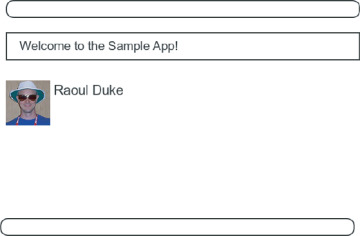
Figure 7.21: A mockup of successful signup.
7.4.1 The Finished Signup Form
To complete a working signup form, we need to fill in the commented-out section in Listing 7.19 with the appropriate behavior. Currently, the form simply freezes on valid submission, as indicated by the subtle color change in the submission button (Figure 7.22), although this behavior may be system-dependent. This is because the default behavior for a Rails action is to render the corresponding view, and there isn’t a view template corresponding to the create action (Figure 7.23).
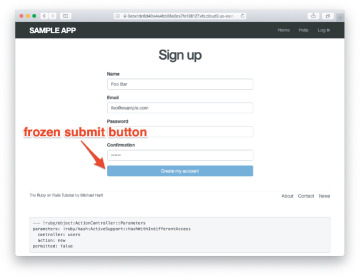
Figure 7.22: The frozen page on valid signup submission.

Figure 7.23: The create template error in the server log.
Although it’s possible to render a template for the create action, the usual practice is to redirect to a different page instead when the creation is successful. In particular, we’ll follow the common convention of redirecting to the newly created user’s profile, although the root path would also work. The application code, which introduces the redirect_to method, appears in Listing 7.26.
Listing 7.26: The user create action with a save and a redirect.
app/controllers/users_controller.rb
class UsersController < ApplicationController
.
.
.
def create
@user = User.new(user_params)
if @user.save
redirect_to @user
else
render 'new', status: :unprocessable_entity
end
end
private
def user_params
params.require(:user).permit(:name, :email, :password,
:password_confirmation)
end
end
Note that we’ve written
redirect_to @user
where we could have used the equivalent
redirect_to user_url(@user)
This is because Rails automatically infers from redirect_to @user that we want to redirect to user_url(@user). (The name @user is incidental; it could be @foo and the redirect would still work as long as the object has class User.)
Exercises
Using the Rails console, verify that a user is in fact created when submitting valid information.
Confirm by updating Listing 7.26 and submitting a valid user that redirect_to user_url(@user) has the same effect as redirect_to @user.
7.4.2 The Flash
With the code in Listing 7.26, our signup form is actually working, but before submitting a valid registration in a browser we’re going to add a bit of polish common in web applications: a message that appears on the subsequent page (in this case, welcoming our new user to the application) and then disappears upon visiting a second page or on page reload.
The Rails way to display a temporary message is to use a special method called the flash, which we can treat like a hash. Rails adopts the convention of a :success key for a message indicating a successful result (Listing 7.27).
Listing 7.27: Adding a flash message to user signup.
app/controllers/users_controller.rb
class UsersController < ApplicationController
.
.
.
def create
@user = User.new(user_params)
if @user.save
flash[:success] = "Welcome to the Sample App!"
redirect_to @user
else
render 'new', status: :unprocessable_entity
end
end
private
def user_params
params.require(:user).permit(:name, :email, :password,
:password_confirmation)
end
end
By assigning a message to the flash, we are now in a position to display the message on the first page after the redirect. Our method is to iterate through the flash and insert all relevant messages into the site layout. You may recall the console example in Section 4.3.3, where we saw how to iterate through a hash using the strategically named flash variable (Listing 7.28).
Listing 7.28: Iterating through a flash hash in the console.
$ rails console
>> flash = { success: "It worked!", danger: "It failed." }
=> {:success=>"It worked!", danger: "It failed."}
>> flash.each do |key, value|
?> puts "#{key}"
?> puts "#{value}"
>> end
success
It worked!
danger
It failed.
By following this pattern, we can arrange to display the contents of the flash site-wide using code like this:
<% flash.each do |message_type, message| %> <div class="alert alert-<%= message_type %>"><%= message %></div> <% end %>
(This code is a particularly ugly and difficult-to-read combination of HTML and ERb; making it prettier is left as an exercise (Section 7.4.4).) Here the embedded Ruby
alert-<%= message_type %>
makes a CSS class corresponding to the type of message, so that for a :success message the class is
alert-success
(The key :success is a symbol, but embedded Ruby automatically converts it to the string "success" before inserting it into the template.) Using a different class for each key allows us to apply different styles to different kinds of messages. For example, in Section 8.1.4 we’ll use flash[:danger] to indicate a failed login attempt.13 (In fact, we’ve already used alert-danger once, to style the error-message div in Listing 7.21.) Bootstrap CSS supports styling for four such flash classes for increasingly urgent message types (success, info, warning, and danger), and we’ll find occasion to use all of them in the course of developing the sample application (info in Section 11.2, warning in Section 11.3, and danger for the first time in Section 8.1.4).
Because the message is also inserted into the template, the full HTML result for
flash[:success] = "Welcome to the Sample App!"
appears as follows:
<div class="alert alert-success">Welcome to the Sample App!</div>
Putting the embedded Ruby discussed above into the site layout leads to the code in Listing 7.29.
Listing 7.29: Adding the contents of the flash variable to the site layout.
app/views/layouts/application.html.erb
<!DOCTYPE html>
<html>
.
.
.
<body>
<%= render 'layouts/header' %>
<div class="container">
<% flash.each do |message_type, message| %>
<div class="alert alert-<%= message_type %>"><%= message %></div>
<% end %>
<%= yield %>
<%= render 'layouts/footer' %>
<%= debug(params) if Rails.env.development? %>
</div>
.
.
.
</body>
</html>
Exercises
In the console, confirm that you can use interpolation (Section 4.2.1) to interpolate a raw symbol. For example, what is the return value of "#{:success}"?
How does the previous exercise relate to the flash iteration shown in Listing 7.28?
7.4.3 The First Signup
We can see the result of all this work by signing up the first user for the sample app. Even though previous submissions didn’t work properly (as shown in Figure 7.22), the user.save line in the Users controller still works, so users might still have been created. To clear them out, we’ll reset the database as follows:
$ rails db:migrate:reset
On some systems, you might have to restart the web server (using Ctrl-C) for the changes to take effect (Box 1.2).
We’ll create the first user with the name “Rails Tutorial” and email address “example@railstutorial.org”, as shown in Figure 7.24. The resulting page (Figure 7.25) shows a friendly flash message upon successful signup, including nice green styling for the success class, which comes included with the Bootstrap CSS framework from Section 5.1.2. Then, upon reloading the user show page, the flash message disappears as promised (Figure 7.26).
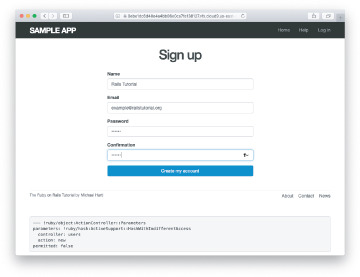
Figure 7.24: Filling in the information for the first signup.
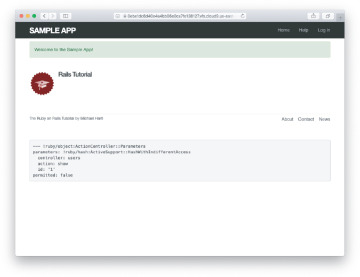
Figure 7.25: The results of a successful user signup, with flash message.
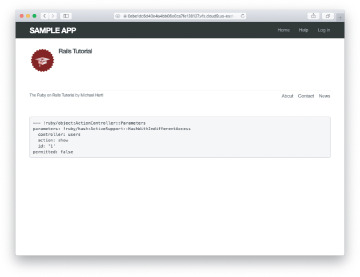
Figure 7.26: The flash-less profile page after a browser reload.
Exercises
Using the Rails console, find by the email address to double-check that the new user was actually created. The result should look something like Listing 7.30.
Create a new user with your primary email address. Verify that the Gravatar correctly appears.
Listing 7.30: Finding the newly created user in the database.
$ rails console >> User.find_by(email: "example@railstutorial.org") => #<User id: 1, name: "Rails Tutorial", email: "example@railstutorial. org", created_at: "2016-05-31 17:17:33", updated_at: "2016-05-31 17:17:33", password_digest: "$2a$10$8MaeHdnOhZvMk3GmFdmpPOeG6a7u7/k2Z9TMjOanC9G...">
7.4.4 A Test for Valid Submission
Before moving on, we’ll write a test for valid submission to verify our application’s behavior and catch regressions. As with the test for invalid submission in Section 7.3.4, our main purpose is to verify the contents of the database. In this case, we want to submit valid information and then confirm that a user was created. In analogy with Listing 7.23, which used
assert_no_difference 'User.count' do post users_path, ... end
here we’ll use the corresponding assert_difference method:
assert_difference 'User.count', 1 do post users_path, ... end
As with assert_no_difference, the first argument is the string 'User.count', which arranges for a comparison between User.count before and after the contents of the assert_difference block. The second (optional) argument specifies the size of the difference (in this case, 1).
Incorporating assert_difference into the file from Listing 7.23 yields the test shown in Listing 7.31. Note that we’ve used the follow_redirect! method after posting to the users path. This simply arranges to follow the redirect after submission, resulting in a rendering of the 'users/show' template. (It’s probably a good idea to write a test for the flash as well, which is left as an exercise (Section 7.4.4).)
Listing 7.31: A test for a valid signup. GREEN
test/integration/users_signup_test.rb
require "test_helper"
class UsersSignupTest < ActionDispatch::IntegrationTest
.
.
.
test "valid signup information" do
assert_difference 'User.count', 1 do
post users_path, params: { user: { name: "Example User",
email: "user@example.com",
password: "password",
password_confirmation: "password" } }
end
follow_redirect!
assert_template 'users/show'
end
end
Note that Listing 7.31 also verifies that the user show template renders following successful signup. For this test to work, it’s necessary for the Users routes (Listing 7.3), the Users show action (Listing 7.5), and the show.html.erb view (Listing 7.8) to work correctly. As a result, the one line
assert_template 'users/show'
is a sensitive test for almost everything related to a user’s profile page. This sort of end-to-end coverage of important application features illustrates one reason why integration tests are so useful.
Exercises
Write a test for the flash implemented in Section 7.4.2. How detailed you want to make your tests is up to you; a suggested ultra-minimalist template appears in Listing 7.32, which you should complete by replacing FILL_IN with the appropriate code. (Even testing for the right key, much less the text, is likely to be brittle, so I prefer to test only that the flash isn’t empty.)
As noted above, the flash HTML in Listing 7.29 is ugly. Verify by running the test suite that the cleaner code in Listing 7.33, which uses the Rails content_tag helper, also works.
Verify that the test fails if you comment out the redirect line in Listing 7.26.
Suppose we changed @user.save to false in Listing 7.26. How does this change verify that the assert_difference block is testing the right thing?
Listing 7.32: A template for a test of the flash.
test/integration/users_signup_test.rb
require "test_helper"
class UsersSignupTest < ActionDispatch::IntegrationTest
.
.
.
test "valid signup information" do
assert_difference 'User.count', 1 do
post users_path, params: { user: { name: "Example User",
email: "user@example.com",
password: "password",
password_confirmation: "password" } }
end
follow_redirect!
assert_template 'users/show'
assert_not flash.FILL_IN
end
end
Listing 7.33: The flash ERb in the site layout using content_tag.
app/views/layouts/application.html.erb
<!DOCTYPE html>
<html>
.
.
.
<% flash.each do |message_type, message| %>
<%= content_tag(:div, message, class: "alert alert-#{message_type}") %>
<% end %>
.
.
.
</html>

